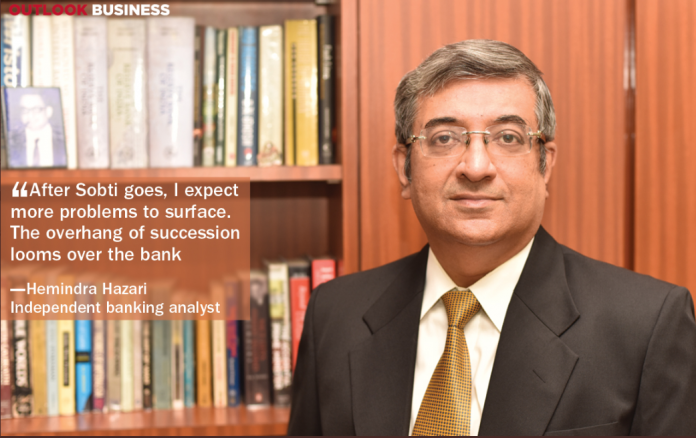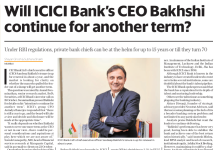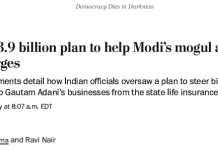Grappling with bad loans, weak loan growth and leadership uncertainty, its valuation is under pressure

Getty images
It’s now an accepted fact that Indian banks leave too much to be desired in terms of maintaining clean books. One of the most high-profile bankers fell from grace due to his willingness to take on risky exposure for quick profit. Not just that, even public sector banks such as SBI and PNB have been flagged for under-reporting FY19 bad loans by 120 billion & 62 billion, respectively. However, not much hue and cry is made about the lack of accountability, sleight of hand and poor governance at PSU banks. NPAs at private banks, on the other hand, attract more attention and scrutiny due to their premium valuation. Hence, investors were alarmed, in April 2018, when the RBI announced that IndusInd Bank had reported non-performing asset (NPA) divergence twice — in FY16 and FY17. It essentially meant the bank was under-reporting risky exposure and rising bad loans.
Quality in question
The bank has made money for investors hand over fist for the past few years, but since the RBI disclosure the stock has been volatile over the past 18 months. Along with the divergence in bad loans, the other reasons are the bank’s exposure to three big defaulters and the new incoming CEO. While the stock price is currently around 1,490, it had hit a 52-week low of 1,190 in October 2019. Exposure to Zee, DHFL and Reliance Group has caused pain to the bank. These entities account for around 21 billion or 1.1% of the bank’s loan book of 1,971 billion.

We have raised our credit cost estimate to reflect the acceleration in provisioning and lending slowdown- Nitin Aggarwal Analyst, Motilal Oswal Securities. The lender’s asset quality has deteriorated as gross NPA increased to 2.19% from 1.09% in September 2018. Net NPA has also doubled from 0.48% to 1.12% during the same period. According to Nitin Aggarwal, research analyst, Motilal Oswal Securities (MOS), there is one silver lining for the bank — its exposure to stressed accounts fell from 1.9% in Q4FY19 to 1.1% in Q2FY20 through a combination of recoveries and provisioning. The management expects it to further drop to 0.8% by Q3FY20 and also claims that it “holds significant collaterals for these exposures”.
However, there’s one account that IndusInd would rather not want investors to focus on — IL&FS. The bank, like some of its peers, had lent around 30 billion to the defaulter and its special purpose vehicle (SPV), making up for 1.6% of the bank’s total loan book at the end of FY19. “IL&FS account has been recognised as an NPA and the bank wrote off 10 billion, but 20 billion is still part of gross bad loans. That means credit cost will rise as the bank will have to make certain provisioning for it,” says an analyst with a reputed brokerage. IndusInd is among the top five creditors of IL&FS and since September 2018, the bank has faced drastic de-rating.

After Sobti goes, I expect more problems to surface. The overhang of succession looms over the bank- Hemindra Hazari Independent banking analyst. While it has provided 70% provisioning for the parent company and 25% for the SPV, analysts believe it won’t be enough. “They will have to provide full provisioning for their exposure to IL&FS. At least for the parent company, IndusInd Bank will have to write off the full loan as it was unsecured,” says Hemindra Hazari, an independent banking analyst. That means the borrower did not offer any collateral for the loan. Experts have also questioned the bank’s decision to lend to an entity with negative networth in the first place. “If they would have just analysed IL&FS’ annual report, they would have realised that they are lending to a firm with negative networth,” asserts Hazari.
But the management is confident that it won’t have to do further provision for IL&FS default. “After some delay, bids for operating assets have come in. This covers 80% of our exposure to IL&FS operating assets. We do not foresee any impact beyond the provisions already held by the bank. We are hopeful of a significant decline in gross NPAs as a result,” wrote IndusInd Bank management in an email response.
To make matters worse, the bank has also lent to debt-laden companies such as Indiabulls Housing and Vodafone Idea, but the management claims that this is not a cause for caution. In its latest investor presentation in October, the bank states that its total exposure to an HFC-RE developer group (said to be Indiabulls) is around 0.07% and is “strongly collateralised with no overdues”. “This HFC-RE developer group has AA+ credit rating. As there were concerns about IndusInd Bank’s exposure to this group, the management decided to disclose it separately,” says Aggarwal.
Along with this, the bank’s exposure to beleaguered sectors such as real estate and telecom is under the scanner (See: Risky business). With telecom companies increasing their tariff rates, the loans given to Vodafone Idea might not turn bad anytime soon but will be monitored by investors. According to news reports, IndusInd Bank has exposure of Rs
30 billion to Vodafone Idea. Darpin Shah, analyst, HDFC Securities states that while the bank’s exposure to the three stressed groups has dipped, its exposure to telecom and real estate will be keenly watched.
The bank’s real estate portfolio is spread across seven cities and it has funded 71 projects with an average ticket size of 1 billion. “The commercial segment is actually performing exceedingly well and in some southern markets, commercial real estate market is booming. The residential market is bottoming out as inventory is falling and new projects are slowing. So, the growth in this segment is slow, but the portfolio is okay,” assures the bank.
So, is the fear of further asset quality deterioration overdone or are investors better off taking a cautious stance as the bank gears up for a new CEO? Has the NPA cycle peaked out or will more NPAs come to light after CEO Romesh Sobti’s retirement in March, like it did at Yes Bank once founder Rana Kapoor made way for a new CEO?
Diversified mix
Outgoing CEO Sobti has been central to IndusInd Bank’s rise. He and his team turned the Hinduja-owned entity into one of the largest Indian private banks from a mere vehicle financier in 2008. When Sobti took over, many were sceptical about its pace of growth, recounts a mutual fund manager. Unwilling to be named, he shares that Sobti brought along four other colleagues from ABN AMRO and presented a profitability roadmap that impressed him.
He decided to bet on the team and his bet turned out to be a multi-bagger. IndusInd Bank registered impressive growth over the past decade. From 750 million in FY08, net profit jumped 44x to 33 billion in FY19. Meanwhile, interest earned has also grown from 18.8 billion to 222.6 billion over the same period. The stock rose from 70 in August 2008 to 2,000 in August 2018.
Today, IndusInd’s consumer-financing segment, which constitutes vehicle financing, non-vehicle retail, micro-finance, accounts for 55% of the loan book. Corporate and commercial banking amounts to remaining 45%, which includes loans to small, mid and large-sized corporates. The management hopes to take the retail book to 60% over the next three years as consumer banking and microfinance market penetration is lower than other segments.
Yet, some analysts are of the view that this well-diversified book will not shield the bank from the ongoing economic slowdown. For instance, its mid-corporate loan book, which accounts for 19% of the total, is likely to be hit as SMEs bear the brunt of the slowdown. “This segment has grown at a healthy pace, but might face problems soon. Mid-corporate accounts such as Cafe Coffee Day and Talwalkars are a big concern for banks like IndusInd,” says the earlier unnamed analyst. But the management is hopeful that green shoots in the economy will be visible over the next two-three quarters. Also, “most of our MSME-facing businesses have not seen material credit cost variance over business cycles and we don’t expect this time to be materially different,” points out the management of IndusInd Bank.
Adding to IndusInd’s woes, stress in microfinance and auto segments is also building up. Gross NPA in CV and small CV segments went up from 1.30% and 1.38%, respectively, in Q1FY20, to 1.43% and 1.72% in Q2FY20. Similarly, gross NPA in microfinance segment rose from 0.61% to 0.94%. “There has been some uptick in slippages in the microfinance segment because of floods in multiple states and elections. Vehicle finance loan book growth has also moderated because of the slowdown,” says Aggarwal.
The bank’s year-on-year loan book growth fell to a 13-quarter low of 21% in Q2FY20 (See: Growth pangs). “The core loan (excluding Bharat Finance) growth for IndusInd bank has slowed down to 14% YoY. This can be attributable to a slowdown in corporate lending, sell down of certain loans as well as macro-driven softness in vehicle finance, which constitutes 25% of the overall loan book for the bank,” says Rohan Mandora, banking analyst, Equirus Securities.

There can be more slippages across lenders and IndusInd can also see some uptick in NPAs- Rohan MandoraBanking analyst, Equirus SecuritiesHowever, consumer financing growth of nearly 39% was led by demand in utility vehicles, cars, two-wheelers and business banking segment. The fall in standalone loan growth establishes the importance of Bharat Finance, whose merger with IndusInd Bank was effective Q1FY20. The management states that Bharat Financial was an ideal fit as the lender is largely an urban/semi-urban player. “We visualised the transformation underway in rural India as a major opportunity to play a wider financial role using the distribution network of Bharat Financial,” he adds.
Analysts believe that the acquisition was timely as the core loan book is slowing down. “The merger of Bharat Finance will help maintain healthy RoA and RoE. It gives IndusInd RoE and RoA of 18% and 1.9%, respectively,” says Mandora. But he also warns, “Risk remains to our estimates if the macro environment doesn’t improve soon as there can be more slippages across various lenders and IndusInd can also see some uptick in NPAs.” The acquisition will also provide some respite against an increase in credit cost and sharp drop in earnings, according to analysts. “Bharat Financial has a high yielding book with very low NPAs. In last two quarters the earnings has received a boost because of the acquisition,” says Shah.
Trouble ahead?
Analysts feel the lender is likely to face more pain due to bad loans in large as well as mid-corporate segments. “While the dissolution of stressed assets is progressing well, we have increased our credit cost estimate to 120 basis points and 90 basis points for FY20 and FY21 to reflect the acceleration in provisioning and the prevailing slowdown in select lending segments like auto,” says Aggarwal.
Also, the bank’s provision coverage ratio has fallen over the past five years and currently stands at 50%, which is way behind compared to its peers (See: Room for trouble). With inadequate provision coverage, the bank isn’t insured against fresh set of bad loans.Hence, the management wants to increase it provision coverage to 60% by end of FY20. “IndusInd Bank’s IL&FS bridge loan, low provisions and its high overall loan growth rates indicate the bank has a high risk appetite. The valuation multiple has already been de-rated and a bleak future awaits shareholders,” opines Hazari.
And even though MOS has a ‘buy’ call on the bank, they have reduced net interest income estimates for the next two years by 5% and 6%, respectively. Earnings estimates have also been cut by 7% and 8% for FY20 and FY21 and Aggarwal adds that management succession remains a key overhang on the stock along with “prevailing slowdown in select lending segments”.
Hazari concurs with Aggarwal. “After Sobti goes, I expect more problems to surface. The overhang of succession looms over the bank. There are two issues — the quality of their corporate book and investment banking fees. So there is some level of apprehension,” says Hazari.
Besides a slowing loan book growth and clouds of NPA, IndusInd Bank’s CASA ratio is also weakening, in line with the overall banking sector. It dipped to 41.4% for Q2FY20 from 44% in FY18, and experts attribute the fall to the increase in usage of payment apps. Besides, as savings rates fall, customers are migrating towards term deposits with fixed rates. Thus, in a bid to improve CASA growth, the management is “pushing towards NRI deposit focused propositions, continued distribution expansion — both branches and through digital distribution”.
Amid these concerns, the stock currently trades at 2.47x price-to-book for FY21 compared to 3.50x in August 2018. In the first quarter of FY20, Sobti allayed investor fears by saying that stress would ease in Q2FY20, but it has only worsened. IndusInd management refused to confirm if IndusInd Bank veteran Suman Kathpalia will be taking over from Sobti. With looming risks and a volatile stock, the incoming CEO has his task cut out.














